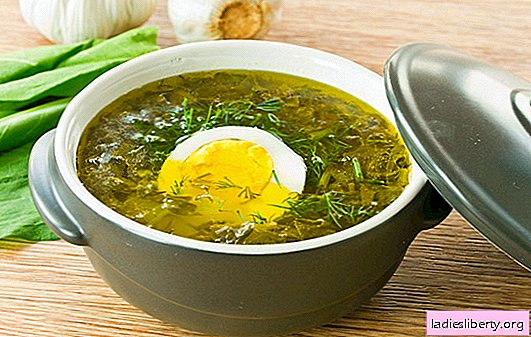
Ageratum or long-flowered flower belongs to the Astrov family.
It got its name due to its ability to retain freshness for a long time in the cut and color of the flowers - translated from Latin as "ageratos" means "ageless". Ageratum is originally from East India.
In Russia, it is grown as an annual - it does not tolerate wintering.
It is good for rabatok, mix beds.
It blooms with small flowers collected in thyroid inflorescences-baskets. The color palette ranges from all shades of blue and blue to white and pink.
Flowering begins in late May - in the southern regions, in early June - in central Russia.
Species and varieties
More than 60 species of ageratum are known. In gardening, mostly Mexican Ageratum or Houston are grown. Among its varieties, the most popular are such varieties: Alba, 'Blaue Kappe,' Summer Snow, Azur Perl, Hawaii Royal, Blausternchen, Leilani Blue, Blue Horizon, Red Sea.
Ageratum: landing
Plantation of an ageratum in open ground begins to be carried out when the threat of night frost is over. The site for planting is chosen protected from the wind and sunny - in the shade the shoots will stretch and the plant will lose its compact shape. Soil ageratum prefers well-drained, loose, fertile. Ideal for the well-being of this flower will be sandy loam and loam with a neutral or slightly alkaline reaction.
Plants are planted at a distance of 0.1-0.15 m from each other, between the rows leave 0.2-0.25 m. Flowering will begin about 2 months after planting.
Ageratum: growing
Ageratum can be grown to seeds, and cuttings.
Due to the thermophilicity, this flower is grown in seedlings in Russian climatic conditions. For this purpose, purchased or collected own seeds in the second decade of March are sown in boxes. Soil is made up of equal parts of humus, peat and sand. Having scattered seeds on the surface of the substrate, they are sprinkled with a thin layer of sand on top and covered with glass or film. They contain seedlings in a warm room (air temperature should be at least + 15 ° C). As the soil dries, the boxes are moistened with a spray bottle. Periodically, it is necessary to ventilate the landing. After shoots appear (after 10-12 days), the cover from the box is removed.
Ageratum seedlings

Seedlings dive into separate pots at the stage of 4 real leaves. Watering seedlings in the morning, avoiding waterlogging. 10-14 days before the expected date of planting the plants on the flower bed, they are taken out to the open air (balcony, terrace) for acclimatization.
Ageratum cultivation by cuttings
In order to grow new plants from cuttings, in the late summer, the matured agrateratus bushes are dug up together with an earthen lump and transferred into pots. They are kept in room conditions throughout the winter, placed as close to the source of natural light as possible or by organizing additional illumination. Watered sparingly, fed once, adding fertilizers for flowering plants to irrigation water (the dose recommended on the package is reduced by 4 times).
Approximately 1.5 months before planting in open ground, cuttings of 10-15 cm in length are cut from plants. Slices are dipped in a root stimulator (root, heteroauxin) and planted in loose fertile soil. A box with cuttings is placed in a greenhouse or covered with glass and placed in a bright place. The roots appear within a month. Young plants are planted in a permanent place after spring frosts end.
Ageratum: care
Care of the ageratum is not complicated. Water it moderately - with waterlogging, the likelihood of developing fungal diseases is high. After watering, the soil on the bed is loosened and weeds are simultaneously removed. Every 2-3 weeks planting agratum is fed with mineral fertilizers. However, it is important not to overdo it, otherwise the plants will build up deciduous mass to the detriment of flowering.
On a note: It is not recommended to use fresh manure as fertilizer for an agrateratum.
To bloom ageratum was plentiful, it is necessary to prune wilted inflorescences.
Ageratum diseases and pests
In violation of agricultural technology, the ageratum is often affected by root rot, cucumber mosaic virus, bacterial wilting.
Gray rot - One of the most dangerous plant diseases caused by fungi of the genus Botritis. Disputes are spread by wind, by contact (by human hands or through tools) when caring for plantings, insects, drops of water (rain or when watering). It progresses most rapidly in wet weather. Signs of damage to this disease are dark spots on the plant, on which then a gray coating appears - spore-bearing mushrooms. If the first signs of the disease are detected, flowers should immediately be treated with fungicidal preparations (Topaz, Fundazol, Bordeaux liquid, etc.). If the measures taken do not help, then it is better to remove and burn diseased plants.
When infected with ageratums root rot help the plants fail - they will have to be destroyed.
Another common disease of many plants and ageratum including cucumber mosaicwhose virus is carried by sucking pests. When plants are infected with a mosaic, yellow or white spots appear on the leaves. There is no specific treatment for this disease. As a preventive measure, it is important to weed in a timely manner, use healthy seeds for sowing, and fight insect pests.
In hot and humid climates (southern regions), ageratum is often affected bacterial wilting. The tissues of the infected plant crack, of which moisture evaporation increases and turgor decreases. Yellow spots with a brown border appear on the leaves. If you cut the sheet across, then dark affected vessels will be visible. Because of this, sap flow in the plant is disturbed and it dies prematurely.
Bacterial withering ageratum

Bacterial wilting can be treated only at an early stage. To do this, use the drug Coronet. Prevention is the use of healthy planting material, the cultivation of resistant to wilting varieties.
Of the pests, whiteflies, nematodes, and spider mites inhabit it.
Notice whitefly easy - when you touch the plants, flocks of white insects fly from them. These parasites feed on the plant sap, as a result of which it withers, lags in growth and dies when measures are not taken. Insecticides (Aktara, Biotlin, Admiral, Actellik, etc.) are used to destroy whiteflies.
Spider mite - Another sucking pest of ageratum. Signs of his presence are light yellow dots on the leaves, and with a severe defeat - the web. It is problematic to get rid of ticks because they are quite tenacious and quickly develop resistance to pesticides. Therefore, when using acaricides (Fitoverm, Actellik, Fufanon), they must be alternated.
Gall nematodes damage the ageratum plantings underground. They damage the root system, plants lag behind in growth, leaves die prematurely and fall off.
Gall nematode roots

To combat these pests, the earth under the bushes of the agratum is watered with Thiazo, Bi-58, Rogor (at the doses indicated in the instructions for the preparations).











